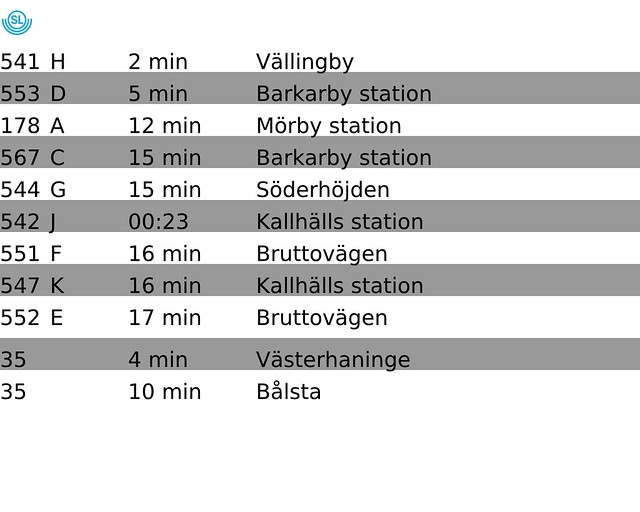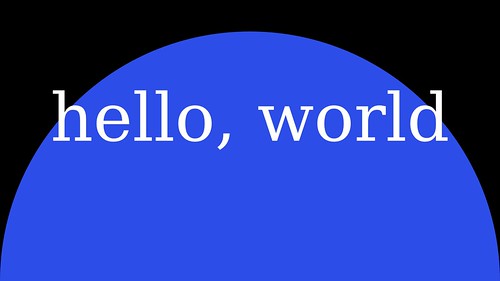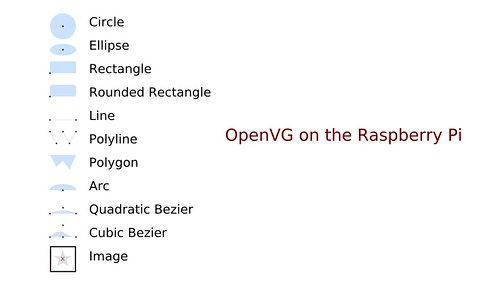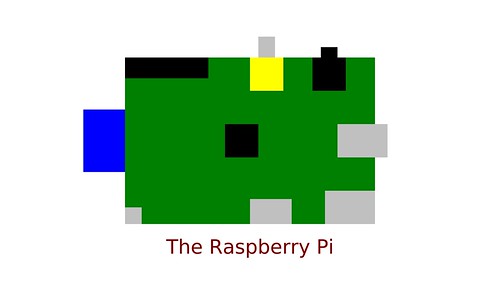Library was cloned for the purpose of building An real time timetable with OpenVG on the Raspberry Pi.
This repository hold the sourcecode for a realtime timetable with data from, https://www.trafiklab.se The application is written in GO and runs on a raspberry PI 2 or Linux.
sl2go is found here https://github.com/Ebiroll/openvg/tree/master/go-client/sl2go
You will need to get your own api-key from trafiklabb.se or run the test server located in srv https://github.com/Ebiroll/openvg/tree/master/go-client/sl2go/srv
I added the ShivaVG library in order to be able to test on a regular linux box before deploying on the raspberry. http://ivanleben.blogspot.se/2007/07/shivavg-open-source-ansi-c-openvg.html
To install necessary pre-requsists do sudo apt-get install build-essential sudo apt-get install libjpeg8-dev indent libfreetype6-dev ttf-dejavu-core # This will get an old version. sudo apt-get install golang
To build, do
mkdir build
cd build
cmake ..
make
cp ../client/*.jpg .
./shivavg demo 5
On windows the CMakeLists.txt compiles fine with latest qt-creator, but I was not able to test it with go yet.
Another feature added to the library is video playback. To get the video to play on the raspberry you must transcode it. This can be done with ffmpeg.
ffmpeg -i [input-video.avi] -profile:v main -an -bsf:v h264_mp4toannexb -pix_fmt yuv420p -r 25 -s 1280*720 test.h264
Works for me.
If you get OMX_ErrorInsufficientResources try adding or changing the cpu/gpu memory split by adding gpu_mem=128 to /boot/config.txt If you get * failed to add service - already in use? Try adding/changing gpu_mem=128 to /boot/config.txt. If all fails try updating your firmware, sudo rpi-update
To build go on raspberry do, Read here, https://github.com/golang/go/wiki/GoArm It boils down to this, Iy ou have old version of go installed, sudo apt-get autoremove golang
cd $HOME
curl http://dave.cheney.net/paste/go-linux-arm-bootstrap-c788a8e.tbz | tar xj
curl https://storage.googleapis.com/golang/go1.5.1.src.tar.gz | tar xz
#Lower the default stack size from 8mb to 1mb.
ulimit -s 1024
cd go/src
env GO_TEST_TIMEOUT_SCALE=10 GOROOT_BOOTSTRAP=$HOME/go-linux-arm-bootstrap ./all.bash
As a final step you should add $HOME/go to your $PATH
export PATH=$PATH:$HOME/go/bin
export GOPATH=~/go_test
To build go-clients on raspberry do, export GOPATH=~/go_test mkdir go_test;cd go_test
go get github.com/Ebiroll/openvg
go install github.com/Ebiroll/openvg
Building go 1.5.1 including bootstrap, If you want to builf the bootstrap go yourself. Try this, # Note GOROOT should not be set curl https://storage.googleapis.com/golang/go1.4.3.src.tar.gz | tar xz ulimit -s 1024 cd go/src env GO_TEST_TIMEOUT_SCALE=10 GOOS=linux GOARCH=arm ./make.bash cd ../.. mv go go-linux-arm-bootstrap curl https://storage.googleapis.com/golang/go1.5.1.src.tar.gz | tar xz cd go/src env GO_TEST_TIMEOUT_SCALE=10 GOROOT_BOOTSTRAP=$HOME/go-linux-arm-bootstrap ./all.bash
Building go 1.5.1 bootstraping from (itself?) # Only unpack 1.5.1 sources curl https://storage.googleapis.com/golang/go1.5.1.src.tar.gz | tar xz cd go/src ulimit -s 1024 export GOROOT_BOOTSTRAP=$HOME/go1.4 GOOS=linux GOARCH=arm ./bootstrap.bash
To use do, setup your GOPATH, i.e. export GOPATH=~/go If it works, you can then remove the botstrap 1.4 build
If you insist on using an older version of golang try setting these,
export CGO_ENABLED=1
export GOOS=linux
export GOARCH=arm
cd ~/go
go get github.com/Ebiroll/openvg
go install github.com/Ebiroll/openvg
Works great for editing go code in linux Download and install. https://code.visualstudio.com/ Install go extension with, Presss Ctrl-P ext install Go Choose lukehobans extension. To compile and run Ctrl-Shift P
Open the folder src/github.com/Ebiroll/openvg
Ctrl-Shift P -> Type Tasks and find : Configure Task Runner
Add the following, FIRST in file. Comment the old task runner. Save file.
{
"version": "0.1.0",
"command": "go",
"isShellCommand": true,
"showOutput": "always",
"args": ["run","${file}"],
"isBuildCommand": true,
"taskSelector": "/t:",
"problemMatcher": {
"owner": "go",
// The file name for reported problems is relative to the current working directory.
"fileLocation": ["relative", "${cwd}"],
// The actual pattern to match problems in the output.
"pattern": {
"regexp": "^(.+)\\:(\\d+)\\:(.+)$",
"file": 1,
"location":2,
"message": 3
}
}
}
When editing a go file you can now press. Ctrl-Shift B
If compilation is successfull it will also run the file.
If you are using MSYS2 with GO
pacman -S base-devel
pacman -S mingw-w64-i686-mesa
#This one is normally already installed
pacman -S msys2-w32api-headers
pacman -S mingw-w64-x86_64-freeglut
Not tested but should work with some mior fixes.
As the functions Polygon, Arc, RGB defined somewhere in the Windows.h/GDI these are renamed with a macro. This confuses the CGO compiler. Abetter solution is required to get it to work.
Here is the graphics equivalent of "hello, world"
// first OpenVG program
// Anthony Starks (ajstarks@gmail.com)
#include <stdio.h>
#include <stdlib.h>
#include <unistd.h>
#include "VG/openvg.h"
#include "VG/vgu.h"
#include "fontinfo.h"
#include "shapes.h"
int main() {
int width, height;
char s[3];
init(&width, &height); // Graphics initialization
Start(width, height); // Start the picture
Background(0, 0, 0); // Black background
Fill(44, 77, 232, 1); // Big blue marble
Circle(width / 2, 0, width); // The "world"
Fill(255, 255, 255, 1); // White text
TextMid(width / 2, height / 2, "hello, world", SerifTypeface, width / 10); // Greetings
End(); // End the picture
fgets(s, 2, stdin); // look at the pic, end with [RETURN]
finish(); // Graphics cleanup
exit(0);
}
Coordinates are VGfloat values, with the origin at the lower left, with x increasing to the right, and y increasing up. OpenVG specifies colors as a VGfloat array containing red, green, blue, alpha values ranging from 0.0 to 1.0, but typically colors are specified as RGBA (0-255 for RGB, A from 0.0 to 1.0)
void WindowClear()
WindowClear clears the window to previously set background colour
void AreaClear(unsigned int x, unsigned int y, unsigned int w, unsigned int h)
AreaClear clears a given rectangle in window coordinates
void WindowOpacity(unsigned int a)
WindowOpacity sets the window opacity
void WindowPosition(int x, int y)
WindowPosition moves the window to given position
void init(int *w, int *h)
Initialize the graphics: width and height of the canvas are returned. This should begin every program.
void initWindowSize(int x, int y, unsigned int w, unsigned int h)
Initialize with specific dimensions
void finish()
Shutdown the graphics. This should end every program.
void Start(int width, int height)
Begin the picture, clear the screen with a default white, set the stroke and fill to black.
void End()
End the picture, rendering to the screen.
void SaveEnd(char *filename)
End the picture, rendering to the screen, save the raster to the named file as 4-byte RGBA words, with a stride of width*4 bytes. The program raw2png converts the "raw" raster to png.
void saveterm(), restoreterm(), rawterm()
Terminal settings, save current settings, restore settings, put the terminal in raw mode.
void setfill(float color[4])
Set the fill color
void Background(unsigned int r, unsigned int g, unsigned int b)
Fill the screen with the background color defined from RGB values.
void BackgroundRGB(unsigned int r, unsigned int g, unsigned int b, VGfloat a)
clears the screen to a background color with alpha
void StrokeWidth(float width)
Set the stroke width.
void RGBA(unsigned int r, unsigned int g, unsigned int b, VGfloat a, VGfloat color[4])
fill a color vector from RGBA values.
void RGB(unsigned int r, unsigned int g, unsigned int b, VGfloat color[4])
fill a color vector from RGB values.
void Stroke(unsigned int r, unsigned int g, unsigned int b, VGfloat a)
Set the Stroke color using RGBA values.
void Fill(unsigned int r, unsigned int g, unsigned int b, VGfloat a)
Set the Fill color using RGBA values.
void FillLinearGradient(VGfloat x1, VGfloat y1, VGfloat x2, VGfloat y2, VGfloat *stops, int n)
Set the fill to a linear gradient bounded by (x1, y1) and (x2, y2). using offsets and colors specified in n number of stops
void FillRadialGradient(VGfloat cx, VGfloat cy, VGfloat fx VGfloat fy, VGfloat r, VGfloat *stops, int n)
Set the fill to a radial gradient centered at (cx, cy) with radius r, and focal point at (fx, ry), using offsets and colors specified in n number of stops
void Line(VGfloat x1, VGfloat y1, VGfloat x2, VGfloat y2)
Draw a line between (x1, y1) and (x2, y2).
void Rect(VGfloat x, VGfloat y, VGfloat w, VGfloat h)
Draw a rectangle with its origin (lower left) at (x,y), and size is (width,height).
void RectOutline(VGfloat x, VGfloat y, VGfloat w, VGfloat h)
Outlined version
void Roundrect(VGfloat x, VGfloat y, VGfloat w, VGfloat h, VGfloat rw, VGfloat rh)
Draw a rounded rectangle with its origin (lower left) at (x,y), and size is (width,height).
The width and height of the corners are specified with (rw,rh).
void RoundrectOutline(VGfloat x, VGfloat y, VGfloat w, VGfloat h, VGfloat rw, VGfloat rh)
Outlined version
void Polygon(VGfloat *x, VGfloat *y, VGint n)
Draw a polygon using the coordinates in arrays pointed to by x and y. The number of coordinates is n.
void Polyline(VGfloat *x, VGfloat *y, VGint n)
Draw a polyline using the coordinates in arrays pointed to by x and y. The number of coordinates is n.
void Circle(VGfloat x, VGfloat y, VGfloat r)
Draw a circle centered at (x,y) with radius r.
void CircleOutline(VGfloat x, VGfloat y, VGfloat r)
Outlined version
void Ellipse(VGfloat x, VGfloat y, VGfloat w, VGfloat h)
Draw an ellipse centered at (x,y) with radii (w, h).
void EllipseOutline(VGfloat x, VGfloat y, VGfloat w, VGfloat h)
Outlined version
void Qbezier(VGfloat sx, VGfloat sy, VGfloat cx, VGfloat cy, VGfloat ex, VGfloat ey)
Draw a quadratic bezier curve beginning at (sx, sy), using control points at (cx, cy), ending at (ex, ey).
void QbezierOutline(VGfloat sx, VGfloat sy, VGfloat cx, VGfloat cy, VGfloat ex, VGfloat ey)
Outlined version
void Cbezier(VGfloat sx, VGfloat sy, VGfloat cx, VGfloat cy, VGfloat px, VGfloat py, VGfloat ex, VGfloat ey)
Draw a cubic bezier curve beginning at (sx, sy), using control points at (cx, cy) and (px, py), ending at (ex, ey).
void CbezierOutline(VGfloat sx, VGfloat sy, VGfloat cx, VGfloat cy, VGfloat px, VGfloat py, VGfloat ex, VGfloat ey)
Outlined version
void Arc(VGfloat x, VGfloat y, VGfloat w, VGfloat h, VGfloat sa, VGfloat aext)
Draw an elliptical arc centered at (x, y), with width and height at (w, h). Start angle (degrees) is sa, angle extent is aext.
void ArcOutline(VGfloat x, VGfloat y, VGfloat w, VGfloat h, VGfloat sa, VGfloat aext)
Outlined version
void Text(VGfloat x, VGfloat y, char* s, Fontinfo f, int pointsize)
Draw a the text srtring (s) at location (x,y), using pointsize.
void TextMid(VGfloat x, VGfloat y, char* s, Fontinfo f, int pointsize)
Draw a the text srtring (s) at centered at location (x,y), using pointsize.
void TextEnd(VGfloat x, VGfloat y, char* s, Fontinfo f, int pointsize)
Draw a the text srtring (s) at with its lend aligned to location (x,y), using pointsize
VGfloat TextWidth(char *s, Fontinfo f, int pointsize)
Return the width of text
VGfloat TextHeight(Fontinfo f, int pointsize)
Return a font's height
TextDepth(Fontinfo f, int pointsize)
Return a font's distance beyond the baseline.
void Image(VGfloat x, VGfloat y, int w, int h, char * filename)
place a JPEG image with dimensions (w,h) at (x,y).
void Translate(VGfloat x, VGfloat y)
Translate the coordinate system to (x,y).
void Rotate(VGfloat r)
Rotate the coordinate system around angle r (degrees).
void Scale(VGfloat x, VGfloat y)
Scale by x,y.
void Shear(VGfloat x, VGfloat y)
Shear by the angles x,y.
void ClipRect(VGint x, VGint y, VGint w, VGint h)
Limit drawing the drawing area to the specified rectangle, end with ClipEnd()
void ClipEnd()
Ends clipping area
Also included is the font2openvg program, which turns font information into C source that you can embed in your program. The Makefile makes font code from files found in /usr/share/fonts/truetype/ttf-dejavu/. If you want to use other fonts, adjust the Makefile accordingly, or generate the font code on your own once the font2openvg program is built.
font2openvg takes three arguments: the TrueType font file, the output file to be included and the prefix for identifiers. For example to use the DejaVu Sans font:
./font2openvg /usr/share/fonts/truetype/ttf-dejavu/DejaVuSans.ttf DejaVuSans.inc DejaVuSans
and include the generated code in your program:
#include "DejaVuSans.inc"
Fontinfo DejaFont
The loadfont function creates OpenVG paths from the font data:
loadfont(DejaVuSans_glyphPoints,
DejaVuSans_glyphPointIndices,
DejaVuSans_glyphInstructions,
DejaVuSans_glyphInstructionIndices,
DejaVuSans_glyphInstructionCounts,
DejaVuSans_glyphAdvances,
DejaVuSans_characterMap,
DejaVuSans_glyphCount);
The unloadfont function releases the path information:
unloadfont(DejaFont.Glyphs, DejaFont.Count);
Note that the location of the font files may differ. (The current location for Jessie is /usr/share/fonts/truetype/ttf-dejavu) Use the FONTLIB makefile variable to adjust this location.
Note that you will need at least 64 Mbytes of GPU RAM:. You will also need the DejaVu fonts, and the jpeg and freetype libraries. The indent tool is also useful for code formatting. Install them via:
pi@raspberrypi ~ $ sudo apt-get install libjpeg8-dev indent libfreetype6-dev ttf-dejavu-core
Next, build the library and test:
pi@raspberrypi ~ $ git clone git://github.com/ajstarks/openvg
pi@raspberrypi ~ $ cd openvg
pi@raspberrypi ~/openvg $ make
g++ -I/usr/include/freetype2 fontutil/font2openvg.cpp -o font2openvg -lfreetype
./font2openvg /usr/share/fonts/truetype/ttf-dejavu/DejaVuSans.ttf DejaVuSans.inc DejaVuSans
224 glyphs written
./font2openvg /usr/share/fonts/truetype/ttf-dejavu/DejaVuSansMono.ttf DejaVuSansMono.inc DejaVuSansMono
224 glyphs written
./font2openvg /usr/share/fonts/truetype/ttf-dejavu/DejaVuSerif.ttf DejaVuSerif.inc DejaVuSerif
224 glyphs written
gcc -O2 -Wall -I/opt/vc/include -I/opt/vc/include/interface/vmcs_host/linux -I/opt/vc/include/interface/vcos/pthreads -c libshapes.c
gcc -O2 -Wall -I/opt/vc/include -I/opt/vc/include/interface/vmcs_host/linux -I/opt/vc/include/interface/vcos/pthreads -c oglinit.c
pi@raspberrypi ~/openvg/client $ cd client
pi@raspberrypi ~/openvg/client $ make test
cc -Wall -I/opt/vc/include -I/opt/vc/include/interface/vcos/pthreads -o shapedemo shapedemo.c ../libshapes.o ../oglinit.o -L/opt/vc/lib -lGLESv2 -ljpeg
./shapedemo demo 5
The program "shapedemo" exercises a high-level API built on OpenVG found in libshapes.c.
./shapedemo # show a reference card
./shapedemo raspi # show a self-portrait
./shapedemo image # show four test images
./shapedemo astro # the sun and the earth, to scale
./shapedemo text # show blocks of text in serif, sans, and mono fonts
./shapedemo rand 10 # show 10 random shapes
./shapedemo rotate 10 a # rotated and faded "a"
./shapedemo test "hello, world" # show a test pattern, with "hello, world" at mid-display in sans, serif, and mono.
./shapedemo fontsize # show a range of font sizes (per <https://speakerdeck.com/u/idangazit/p/better-products-through-typography>)
./shapedemo demo 10 # run through the demo, pausing 10 seconds between each one; contemplate the awesome.
To install the shapes library as a system-wide shared library
pi@raspberrypi ~/openvg $ make library
pi@raspberrypi ~/openvg $ sudo make install
The openvg shapes library can now be used in C code by including shapes.h and fontinfo.h and linking with libshapes.so:
#include <shapes.h>
#include <fontinfo.h>
pi@raspberrypi ~ $ gcc -I/opt/vc/include -I/opt/vc/include/interface/vmcs_host/linux -I/opt/vc/include/interface/vcos/pthreads anysource.c -o anysource -lshapes
pi@raspberrypi ~ $ ./anysource
A Go programming language wrapper for the library is found in openvg.go. Sample clients are in the directory go-client. The API closely follows the C API; here is the "hello, world" program in Go:
package main
import (
"bufio"
"github.com/ajstarks/openvg"
"os"
)
func main() {
width, height := openvg.Init() // OpenGL, etc initialization
w2 := openvg.VGfloat(width / 2)
h2 := openvg.VGfloat(height / 2)
w := openvg.VGfloat(width)
openvg.Start(width, height) // Start the picture
openvg.BackgroundColor("black") // Black background
openvg.FillRGB(44, 77, 232, 1) // Big blue marble
openvg.Circle(w2, 0, w) // The "world"
openvg.FillColor("white") // White text
openvg.TextMid(w2, h2, "hello, world", "serif", width/10) // Greetings
openvg.End() // End the picture
bufio.NewReader(os.Stdin).ReadBytes('\n') // Pause until [RETURN]
openvg.Finish() // Graphics cleanup
}
To build the wrapper: (make sure GOPATH is set)
pi@raspberrypi ~/openvg $ go install .
pi@raspberrypi ~/openvg $ cd go-client/hellovg
pi@raspberrypi ~/openvg/go-client/hellovg $ go build .
pi@raspberrypi ~/openvg/go-client/hellovg $ ./hellovg



